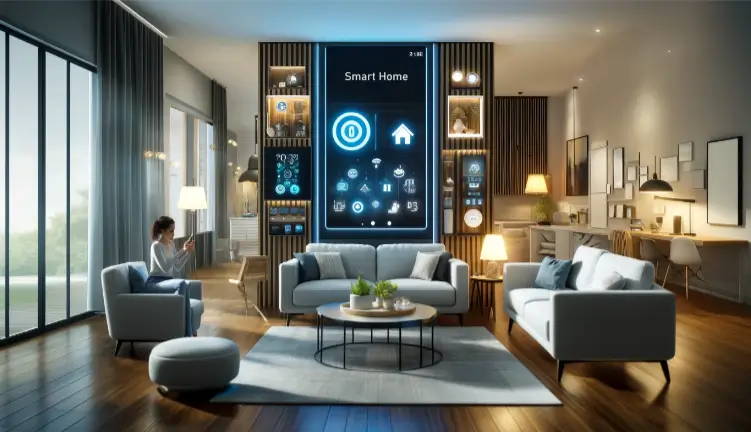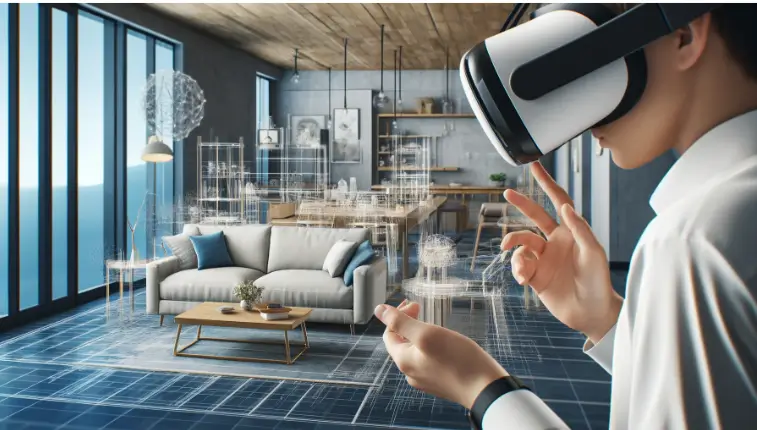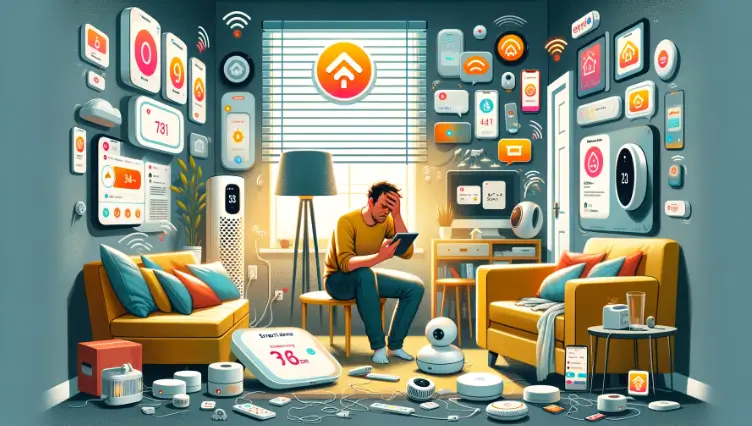
In an era where technology infuses every aspect of our lives, the merging of digital advancements with interior design is transforming our living environments. This union promises not only to enhance the aesthetics of our homes but also to boost their functionality, efficiency, and comfort. In this detailed exploration, we delve into the innovative integration of technology in interior design, examining how these technologies elevate both the form and function of our living spaces.
The Rise of Smart Homes
Smart homes are at the cutting edge of residential technology, providing homeowners unprecedented control over their living environments. Devices connected via the Internet of Things (IoT) automate tasks that were traditionally manual, such as adjusting lighting, climate, and security settings. Systems like Google Nest integrate various home controls into a user-friendly interface, optimizing energy use and household management based on personalized data and preferences.
Augmented and Virtual Reality: Transforming Design Visualization

Augmented Reality (AR) and Virtual Reality (VR) are revolutionizing the interior design process by allowing designers and clients to visualize changes in real-time. AR applications like IKEA Place enable users to see how furniture and decor items look in their actual spaces, adjusting colors and configurations without physical limitations. VR goes a step further by offering immersive virtual walkthroughs of proposed designs, which aids in decision-making and enhances client satisfaction.
Smart Furniture: Beyond Conventional Comfort
The evolution of smart furniture is reshaping what we expect from household items by embedding technology for enhanced convenience and functionality. For example, sofas and chairs now come equipped with built-in charging stations, adjustable components, and customizable configurations to suit the dynamic needs of modern life. Smart beds monitor sleep patterns and adjust their settings to improve sleep quality and overall health, making them more than just a place to rest.
Sustainable Technology: Eco-friendly Design Choices
Incorporating sustainable practices through technology is a growing trend in interior design. Energy-efficient appliances and smart systems reduce power consumption and manage resources more effectively. Innovations like solar panel chargers and eco-friendly LED lighting are becoming standard options for eco-conscious homeowners. Moreover, the use of recycled materials in furniture and building supplies underscores a commitment to environmental stewardship.
Also read: Exterior Color Combinations For House
Artificial Intelligence: Customizing Living Spaces

Artificial Intelligence (AI) is set to revolutionize personalization in interior design by adapting environments to individual lifestyles and preferences. AI systems analyze data to automate adjustments in lighting, climate, and sound, ensuring optimal conditions for relaxation or productivity. This technology not only simplifies home management but also enhances the living experience by anticipating the needs of its inhabitants.
Enhancing Health and Wellness
Technologically advanced interior design promotes health and wellness by improving the quality of living environments. Smart air purifiers and advanced HVAC systems equipped with HEPA filters improve indoor air quality, crucial for residents with health sensitivities. Intelligent lighting systems that mimic natural light patterns help regulate sleep cycles and mood, contributing to overall well-being.
Navigating Challenges: Privacy, Complexity, Cost, and Adaptability

Integrating technology into interior design, while beneficial, presents several significant challenges that must be carefully managed to ensure the successful adoption and long-term viability of tech-enhanced environments.
Privacy Concerns: As smart devices become more integrated into our homes, privacy issues escalate. Many of these devices collect vast amounts of personal data to operate efficiently—data that includes when residents are home, their energy usage, and even their daily routines. Ensuring that this data is handled securely and that privacy is respected is paramount. Homeowners need to be aware of the data their devices are collecting and how it is being used or shared, requiring transparency from manufacturers and robust security protocols.
System Complexity: The more sophisticated the technology, the more complex it is to install and maintain. This complexity can be a barrier for both homeowners and designers. Advanced smart home systems often require professional installation and regular updates to function correctly. Additionally, interoperability between different brands and systems can be problematic, as not all devices seamlessly connect or communicate with each other, leading to potential system conflicts or user frustration.
High Initial Costs: The cost of integrating cutting-edge technology into home design can be prohibitive for many. Advanced systems and smart appliances often come with high price tags, not only in terms of initial outlay but also installation and maintenance costs. While these costs may decrease as the technology becomes more widespread, they currently remain a significant barrier to entry for average homeowners.
Adaptability and Obsolescence: Technology evolves at a rapid pace, which can lead to issues with obsolescence. Today’s cutting-edge system may be outdated within a few years, requiring costly upgrades or replacements. This rapid cycle of obsolescence can make it challenging to maintain a technologically current home without continuous investment. Additionally, as families grow and needs change, the initial tech setup might not adapt well to new requirements, necessitating further adjustments or enhancements.
Integration with Traditional Design Elements: While technology offers numerous enhancements, integrating it in a way that complements traditional design aesthetics can be challenging. Designers must balance the functional benefits of technology with the need to maintain a cohesive and inviting interior. This often means hiding or disguising tech elements within traditional design features to ensure that the technology does not overwhelm the space visually or stylistically.
Environmental Impact: While many modern technologies focus on energy efficiency and sustainability, the production, use, and disposal of electronic devices carry environmental impacts. The challenge lies in designing systems that not only minimize energy consumption during use but also consider the lifecycle impact of the devices themselves, from resource extraction and manufacturing to disposal and recycling.
Also read: Two Colour Combination for Living Room
Future Trends: Technology Meets Traditional Design
Looking ahead, the intersection of technology and traditional design principles is set to deepen, with innovative materials and digital tools creating more adaptive and responsive spaces. The future of interior design will likely see even greater integration of tech elements that are seamlessly incorporated into decorative and functional aspects of the home.
Impact on Accessibility
One significant benefit of technology in interior design is improved accessibility. Automated systems that can be controlled via voice or simple user interfaces make living spaces more accessible to individuals with disabilities or mobility issues. Technology thus serves not only to beautify and modernize spaces but also to make them more inclusive.
Conclusion
The integration of technology into interior design is reshaping our homes into smarter, more efficient, and personalized environments. By embracing these advancements, designers and homeowners can create spaces that not only meet the aesthetic and functional needs of today but also anticipate the demands of tomorrow. As this field continues to evolve, the potential for innovation is limitless, promising homes that are not only more connected and responsive but also more attuned to the diverse needs of their inhabitants.

Abhishek Nath
Author
Abhishek is the innovative mind behind HomeGlanza, a leading interior design company based in Hyderabad. Through HomeGlanza’s online platform, Abhishek extends his expertise to a wider audience, offering design inspiration, tips, and access to curated products to elevate any living space.
